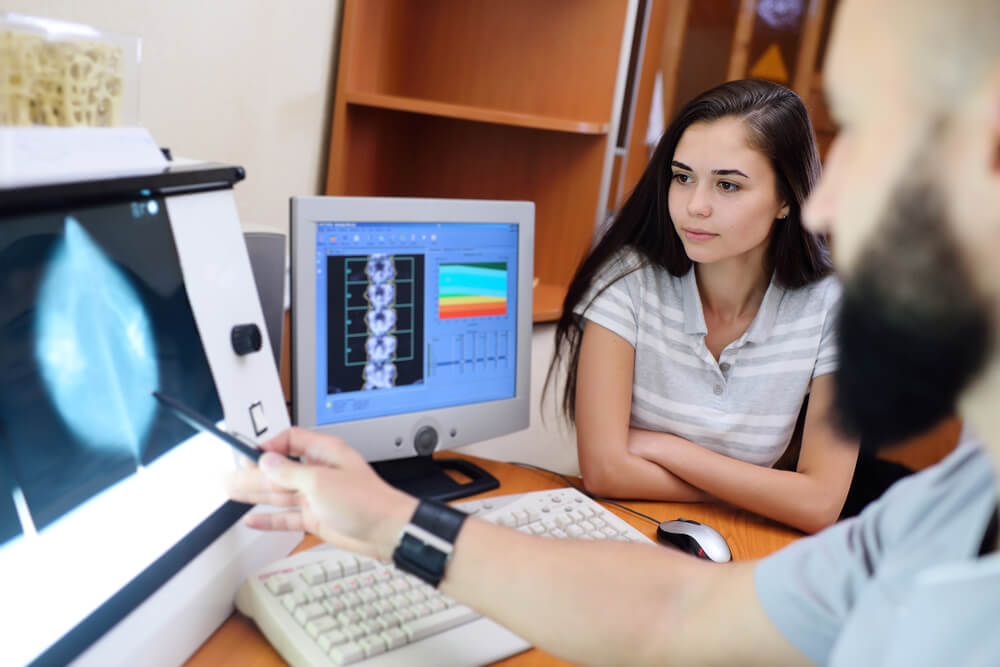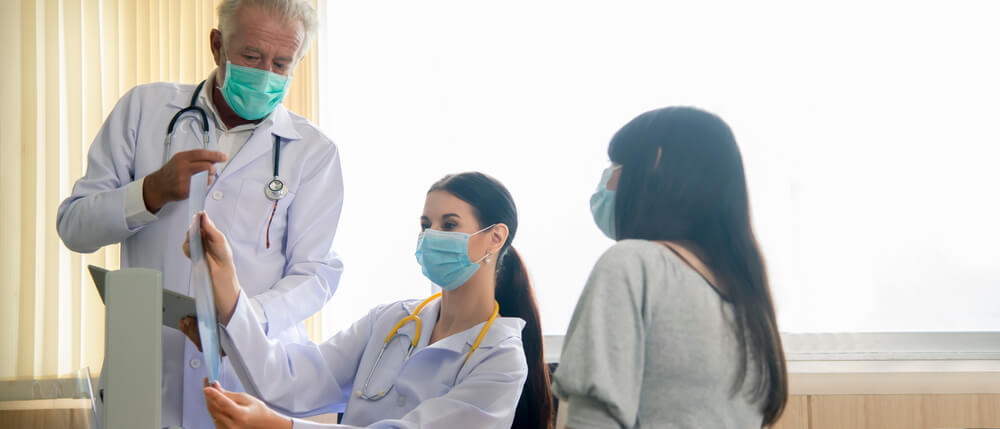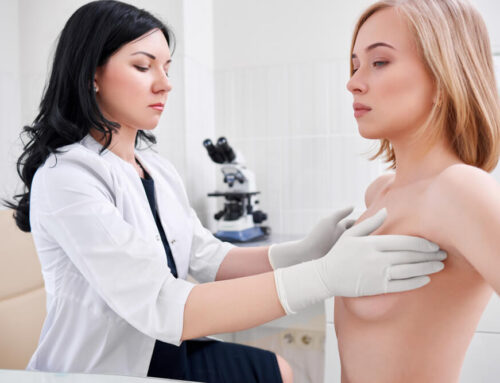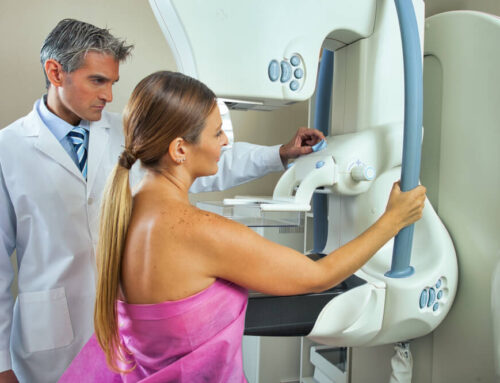Getting called back after a screening mammogram is not a rare occurrence, and it doesn’t mean that you have reasons to be concerned right away. At that point, it means that when screening your breasts, the doctors have discovered something that might be suspicious, so they want to do additional testing.
What is an Abnormal Mammogram?
An abnormal mammogram is when the imaging of your breasts detects something considered to be irregular or could be malignant.
This happens to many women, but fortunately, it is often not alarming, and only a small percentage of patients with abnormal mammogram results develop breast cancer.
What Causes Abnormalities in a Mammogram?

The abnormalities in a mammogram can vary. Therefore, you should not be concerned until further examinations are done.
If a doctor called you back after a mammogram, it could be due to one of the following reasons:
- Unclear imagery
- Calcifications, mass or cyst
- Dense breasts
Sometimes, the images made during screening are unclear, making it difficult for radiologists to examine the breast tissue. Often, this is the very reason patients are called back for additional examination.
Another reason why a mammogram can be abnormal is that the screening detects calcifications or a mass. Calcifications appear on the images as tiny white spots and could be benign or malignant, depending on the type.
Calcifications can be very small (microcalcifications), which could be cancerous. Therefore they warrant further testing and biopsy.
Larger white spots or macrocalcifications are more common in older women and are typically not cancerous. No biopsy is needed if a mammogram shows large white spots.
A mammogram is also considered abnormal if the imagery shows irregular areas of breast tissue or mass. A mass can be cancerous but not necessarily. These are often non-cancerous tumors or cysts (fluid-filled sacs). Fluid-filled sacs are usually not cancerous, so a biopsy is not necessary.
However, there is also a possibility that a mass is cancerous so additional testing is advised. The reason why patients are called back is that cancerous and non-cancerous masses can appear the same on a mammogram, so the doctor might not be able to differentiate between them without further testing. In this case, an ultrasound is advised to ascertain whether the mass is solid or filled with fluids (a cyst).
A mammogram can also appear abnormal if the imaging reveals a change in breast tissue since the last mammogram, so the doctor wants you to repeat the examination to ascertain the reason for that. When reading a mammogram, doctors typically compare it to your previous mammograms to detect any changes.
If a patient has dense breast tissue, reading a mammogram can be difficult. In that case, the patient is called back for additional screening.
How Often Does it Happen?
It is estimated that about 10% of all women who take mammograms are called back due to abnormal mammogram results. Given that breast cancer is the most common type of cancer among women in the U.S., it is completely normal to be concerned.
However, statistically speaking, most patients who are called back for a follow-up appointment do not have cancerous growth. It is also important to emphasize that even if additional testing detects cancer, treatment results have been very successful, especially if cancer is detected at an early stage.
What to Do If Your Mammogram is Abnormal?
Firstly, it is understandable to be scared but don’t fall into despair because your mammogram is abnormal and you got called back for a follow-up appointment. This doesn’t mean your health is in danger because, as mentioned previously, the reason for an abnormal mammogram could be as simple as unclear images.
Additional Testing
Next, depending on the initial mammogram (the screening mammogram), your doctor might require you to do a more comprehensive mammogram or diagnostic mammogram, an ultrasound, an MRI, or a biopsy to determine the nature of the abnormality.
Getting the results of a diagnostic mammogram could take longer compared to a regular mammogram as the images are more detailed and the areas of concern need to be zoomed in. There is a possibility you will find out the results right there and then unless a biopsy is needed. If your diagnostic mammogram doesn’t show signs of cancer, typically, no further tests are needed.
An ultrasound might also be done to better see the change in your breast tissue.
Via magnetic resonance imaging (MRI), detailed images of your breasts will be taken to further help identify the abnormality in your mammogram. The procedure is not painful, but it does require you to lie down in a tube for up to 60 minutes.
If the results of the MRI show that you don’t have any malignancies, you can go home and continue with your routine mammograms as usual (typically once a year). To make sure nothing changes in the near future, the doctor could require you to do your next mammogram earlier than regular.
However, if there is a possibility that you have cancer, the doctor will order a biopsy.
A biopsy is necessary if the mass detected in your breast tissue is solid and not filled with fluid (cyst). During a biopsy, the doctor uses a thin needle to take a sample of the suspicious breast tissue. In other cases, it might be necessary to cut through the skin to take the sample.
Typically, it takes up to a week to get the results of a biopsy and know whether the mass in your breast tissue is cancerous. A biopsy is the only way to be 100% sure.
We understand that waiting for the results can be stressful and frightening but keep in mind that the results could be negative and not life-threatening.
When It’s a Sign of Cancer

If your biopsy came out positive and you do have breast cancer, it is important to realize that this does not mean a death sentence. Your doctor will have to perform further tests to determine the type of cancer and whether or not it has already spread to other areas.
Early detection and treatment is the key to surviving breast cancer. In fact, the survival rate for women with breast cancer detected early is 99%. This is why regular mammograms are crucial as they can detect cancerous growths in their early stages, and a proper treatment plan can be designed to help the patient.
After performing additional testing, your doctor will advise you on the best treatment available based on the type of cancer and the stage it’s in. Keeping a positive attitude, as difficult as that seems, is also essential.
Schedule Your Mammogram Today
Regular mammograms are the only way to stay ahead and detect any suspicious lumps or cancerous growths early on when treatment can be very successful.
The best way to prevent breast cancer is to develop a healthy lifestyle and schedule regular check-ups with your chosen doctor.
Our healthcare professionals here at Breast Care Center of Miami can help you prevent breast cancer and provide specialized treatment tailored to each patient.
Take your health into your hands and book an appointment with your doctor right away.






